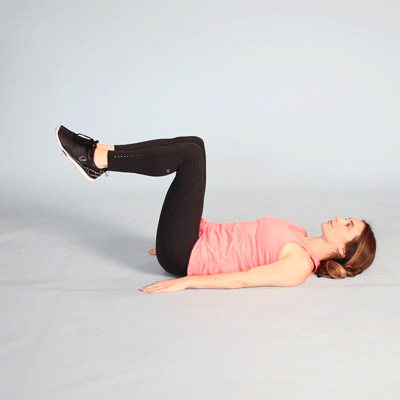Deep core exercises focus on strengthening the muscles around the spine and abdomen. They enhance stability, posture, and overall fitness.
Core strength is crucial for maintaining good posture and providing a foundation for all physical activities. Engaging in deep core exercises is vital for athletes and individuals aiming to improve physical performance or prevent injury. By targeting the muscles beneath the surface, such as the transverse abdominis and multifidus, these exercises promote a strong, supportive midsection.
A well-conditioned core allows for efficient movement patterns, making daily tasks easier and enhancing athletic ability. From planks and Pilates to targeted rotational movements, incorporating a variety of deep core exercises into your fitness routine can yield substantial benefits to both health and physical performance. Remember, core training is not just about achieving a toned abdomen; it’s about creating a solid base for a fit and functional body.

Credit: athleanx.com
What Are Deep Core Muscles?
Imagine your body as a sturdy tree. Just as the tree has a solid trunk, your body has core muscles. These muscles are deep inside your belly, back, and pelvis. They are not like the muscles that make your arms and legs move. They are hidden, but they are very important. They are like a secret power that helps your body stand tall, move, and balance.
Role Of Deep Core Muscles
The deep core muscles have a special job. They keep your spine safe and help it move the right way.
- They are like a belt that wraps around your middle.
- They help you bend, twist, and reach.
- They work even when you sit or stand still.
Importance Of Strong Deep Core Muscles
Having strong deep core muscles is like having a good anchor on a ship. They help everything else work better.
- They make your back feel good and not hurt.
- They help you do things like sports better.
- They stop you from falling when you bump into things.
When these muscles are strong, your body feels happy and can do many things. If they are weak, you might get hurt or feel pain. Taking care of them is a good idea so you can run, play, and have fun.

Credit: www.healthline.com
Benefits Of Deep Core Exercises
The benefits of deep core exercises are vast and vital for overall fitness. A strong core acts as the foundation for countless physical activities. Let’s dive into the specific advantages that come with focusing on this crucial muscle group.
Improved Posture
One of the key benefits of strengthening your deep core muscles includes enhanced posture. A stable core supports the spine, neck, and shoulders, leading to:
- Better spinal alignment
- Relaxed muscles around the neck and back
- Decreased strain on the body while sitting or standing
Increased Stability And Balance
Stability and balance are crucial in daily activities. Strengthening deep core muscles:
- Enhances coordination
- Boosts functional strength
- Improves athletic performance
Reduced Risk Of Injury
Engaging in deep core exercises plays a pivotal role in injury prevention. A fortified core leads to:
| Advantage | Explanation |
|---|---|
| Lower back protection | Muscles support the lumbar region. |
| Better movement mechanics | Correct form and alignment in exercises. |
Effective Deep Core Exercises
Engaging your deep core muscles demands more than sit-ups. Core stability is key for balance and strength in everyday activities. Inside your torso lie muscles integral for posture and movement. Effective deep core exercises target these hidden muscles. Let’s embark on a journey to a firmer core with the best exercises suitable for all fitness levels.
Plank Variations
Planks are a powerhouse for the deep core. Not only do they engage the entire core, but they also challenge your shoulders, chest, and legs. Start with a standard front plank. Aim for 30 seconds and increase gradually. Mix things up with side planks to target obliques. Advanced? Try the forearm plank with leg lifts for an extra challenge.
- Front Plank: Strengthen the rectus abdominis and stabilize the spine.
- Side Plank: Work the obliques, the muscles on the side of your stomach.
- Leg Lift Plank: Engage the lower back and buttocks along with the core.
Dead Bug Exercise
The dead bug exercise is perfect for preventing lower back pain. It enhances control and stability of the core. Lie on your back, arms extended towards the ceiling, knees over hips. Slowly lower opposite arm and leg, then switch. Keep your back pressed to the floor. Maintain precise, slow movements for maximum effect.
- Arm and Leg Lowering: Enhances coordination and activates all core muscles.
- Controlled Movement: Maintains constant core tension, important for stability.
Bird Dog Exercise
Bird Dog tightens the core and encourages spinal alignment. Begin on all fours, with your back flat like a tabletop. Extend one arm and the opposite leg straight out. Hold, return to the starting position, and repeat on the other side. Stability is key, so move with control. Aim for a balanced routine, aligning your body each time.
- Opposite Arm and Leg Extension: Challenges balance and core engagement.
- Tabletop Position: Encourages a neutral spine, crucial for core conditioning.
Pelvic Tilts
Pelvic tilts are simple yet potent. They strengthen the lower abdominal muscles and enhance lumbar stability. Lie on your back with knees bent. Tighten your stomach and tilt your pelvis upward. Hold for a few seconds. Repeat while keeping your upper body relaxed. Proper form and breathing amplify the benefits of pelvic tilts.
- Lumbar Stability: Targets the deep abdominal muscles, supporting the spine.
- Core Engagement: Activates both the lower and upper abdominal muscles.
Tips For Proper Form And Progression
Perfecting the art of deep core exercises starts with two key elements: proper form and progression. These exercises not only shape the abdomen but also provide essential support for the entire body. Correct form ensures effectiveness and safety while progression keeps the challenge alive, encouraging continual strength gains. Follow these tips to ensure you’re getting the most out of your deep core workouts.
Engaging The Deep Core Muscles
The deep core muscles lie beneath the surface muscles and are crucial for stability. To engage them, envision drawing your navel towards your spine. This helps activate the deepest layer, the transverse abdominis. It’s essential to maintain this engagement throughout each exercise. Remember to breathe normally; don’t hold your breath. A steady breath flow supports core activation and endurance.
Key points for engaging your deep core:
- Maintain a neutral spine position.
- Focus on the quality of movements rather than speed.
- Breathe steadily and deeply.
Incorporate exercises like planks and leg lifts but start with the basics. Only increase the difficulty when you can hold perfect form.
Gradually Increasing Intensity And Duration
Progression is about slowly raising the bar to build strength over time. Begin with what you can manage, then gradually increase the intensity. This might mean holding a plank for a few seconds longer each time or adding an extra rep to your routine. Use a diverse range of movements that challenge the core from different angles to promote balanced development.
Progression strategy includes:
- Add more reps or sets as exercises become easier.
- Gradually increase the time you hold positions like planks.
- Vary exercise patterns to challenge the deep core muscles.
Keep a record of your workouts to track improvements and motivate further progression. Seek the guidance of a fitness professional to ensure your routine remains safe and effective.
Following the structured approach of proper form and mindful progression, your path to a stronger, more resilient core will be clear and injury-free.
Incorporating Deep Core Exercises Into Your Routine
Strengthening your deep core muscles is essential for stability and preventing injuries. Integrating deep core exercises into daily fitness routines improves posture, performance, and overall health.
Choosing The Right Exercises
Selecting appropriate deep core exercises is crucial to maximize benefits. Start with foundational movements like planks and pelvic tilts.
- Dead Bug: Boosts core endurance.
- Bird-Dog: Enhances stability and coordination.
- Pilates Scissors: Targets deep abdominal muscles.
Consult a fitness expert to tailor exercises to fitness levels and goals.
Frequency And Duration
Consistency is key for core strength. Aim for short, focused sessions.
| Level | Frequency | Duration |
|---|---|---|
| Beginner | 3-4 times a week | 5-10 minutes |
| Intermediate | 4-5 times a week | 10-15 minutes |
| Advanced | Daily | 15-20 minutes |
Adjust frequency and duration as strength improves.
Combining With Other Workouts
Integrate deep core exercises with cardio or strength training sessions.
- Blend with cardio: Include planks or bridges post-run.
- Mix with weights: Add a core twist to lifting routines.
- Pair with yoga: Incorporate core-focused poses.
Combining workouts leads to a well-rounded fitness regime.

Credit: www.healthline.com
Frequently Asked Questions Of Deep Core Exercises
How Do You Work Out Your Deep Core?
To work out your deep core, focus on exercises such as planks, dead bugs, and leg lowers. Engage your core muscles during each movement and ensure proper breathing techniques. Consistency is key for strengthening these inner muscle layers.
Do Deep Core Exercises Actually Work?
Yes, deep core exercises effectively strengthen core muscles, enhancing stability and reducing the risk of injury. They target deep abdominal layers, promoting better posture and overall fitness.
How Do You Train Deep Abdominal Muscles?
Engage in exercises like planks, Pilates, and yoga to strengthen deep abdominal muscles. Focus on core stabilization movements and controlled breathing for effective training. Regular practice ensures improvement in deep muscle strength.
Can You Do Deep Core Exercises Everyday?
Yes, you can perform deep core exercises daily, but moderation and proper technique are key to prevent injury and allow muscle recovery.
Conclusion
Strengthening your core is crucial for overall fitness. These deep core exercises offer a robust foundation for your workout regimen. Incorporate them consistently and watch your stability and strength soar. Remember, a stronger core leads to improved posture and reduced injury risk.
Start your journey to a solid core today and feel the difference!